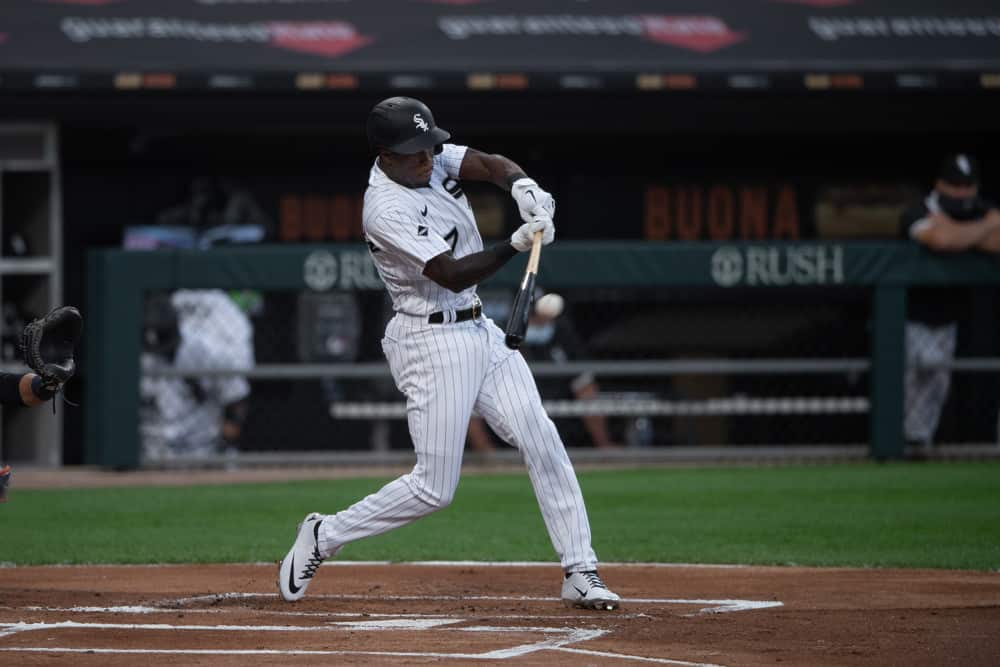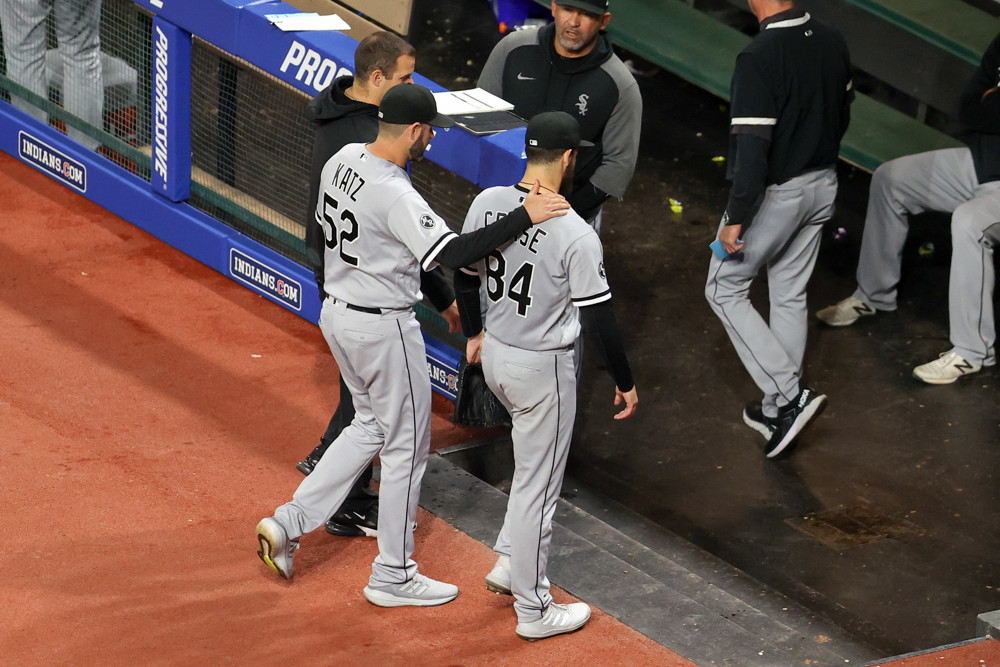On Friday, Tim Anderson scored four runs by himself in one of the White Sox's more thrilling victories this season. On Saturday, Tony La Russa gave Anderson the day off, and the White Sox had to work to score four runs as a team in a humdrum loss.
La Russa said the breather -- Anderson's second in three days -- is because the Sox are playing seven straight on turf. It's hard to know whether it's truly necessary, but an double-digit lead in the AL Central takes any urgency out of the debate.
The complaints are more rooted in a mere disappointment of not seeing Anderson when he's rolling, and rolling he is. Over his last 10 games, Anderson's batting .388.
His OBP over that stretch? Also .388.
The recent surge has offset a slow start to the second half, raising his average to .289 in his 30 games since the All-Star break.
His OBP over that stretch? .294.
He's only drawn one walk in the second half, and he isn't a natural threat to be hit by a pitch because he gets worked away, so he's entirely reliant on hits to get on base. Fortunately, Anderson is one of a few guys for whom that doesn't register as a problem. He's hitting .320 since the start of the 2019 season on the strength of a .382 BABIP, which is 90 points above league average, 15 points ahead of the runner-up (Yoán Moncada), and 37 points ahead of the next non-White Sox (Trea Turner, .355).
Frank Menechino told James Fegan it's an approach he wouldn't want to teach, but that allows for the possibility that it can even be taught, which seems unlikely. Anderson presents himself in that story as somebody who just knows how to get his hands where they need to be. There are hints of an approach that could help others -- he moves his feet in the batter's box to anticipate contact points, and he doesn't step into the box looking to max out damage -- but it probably takes a lot of empty at-bats to shape that future. Anderson had two full seasons of them before it clicked, but he was a first-round pick who could cover shortstop during rebuilding years. Not everybody gets that much time to find themselves at the MLB level without inviting a change of scenery.
However it happened, Anderson fascinates. He's anything but a quintessential leadoff man, yet it feels weird to not see him at the top of a lineup card. That's something I couldn't imagine saying about a guy who's a threat to carry a sub-.300 OBP for significant stretches of the season.
It helps that the Royals won a World Series with Alcides Escobar entrenched in the leadoff spot in 2015. He hit just .259/.296/.322 in 131 games batting first, and that was one of many reasons sabermetricians pilloried Ned Yost, but it didn't seem to matter. Yost seemed to relish thumbing his nose at conventional wisdom.
Now, take that mindset and apply it to a superior offensive player. The Anderson of the last 30 games might be running the same OBP as a guy who was seen as a farcical leadoff hitter several years ago, but the other slash numbers show why nobody's complaining:
- Escobar in 2015: .257/.293/.320
- Anderson's last 30: .289/.294/.541
In and of itself, a .294 OBP isn't what anybody wants from the leadoff spot, even for a month. Take a step back, and that .294 OBP represents pure production. If you're going to get on base at that clip, you'd rather accomplish it batting .289 rather than .257, especially if a lot of your hits are superior to walks. Anderson's just one of the few hitters who seems to have a choice.
* * * * * * * * *
Likewise, Anderson's counterintuitive brand of success makes a lot more sense when you view the player as a whole. There's a great story about Anderson in the Washington Post, which is part of a series of nine stories about baseball's decline in African-American players. For Anderson's chapter, Michael Lee treats him as a figure who's comfortable trying to bend a sport and its culture to his will.
Anderson doesn't see a downside in celebrating on-field successes, because he views the game as one that's designed to demoralize you if it you let it. Anderson refuses:
“We are playing a struggling game, where you struggle every day,” Anderson says. “It’s okay to celebrate the positive things and not get down on yourself, because that’s going to be a confidence builder to keep making you get better.” [...]
“You are playing a failing game,” he says. “If you’re playing this game and handling it well, then you’re a strong person.”
Anderson's approach gives him the most opportunities to make something happen, to give everybody something to celebrate. He's going to try to beat the game instead of inviting the game to beat him. While he might be the face of baseball's future, you could call him a traditionalist at heart because he doesn't believe in ties.
His assertiveness at the plate and on the field has allowed him to be defined by what he does, which is harder than it sounds for good players producing around a notable shortcoming.
Take the discourse around Yoán Moncada, who is running a career-high walk rate and OBP, a career-low strikeout rate, and metrics that show him playing the best third base of his career. He brings a lot more to the table than he removes from it, but because his slugging percentage is hovering around .400 and he's not turning around fastballs, every ineffective game turns into a referendum on his star potential.
Anderson has the game's third-lowest walk rate, which caps his OBP potential. At .330 on the season, he's 31st out of 53 players with at least 100 plate appearances batting first this year. He's not really leadoff man in the classic sense.
By sheer force, he's redefined the task at hand. He's not so much a table-setter as he's just a guy you want to see at the plate, and it just so happens that you're guaranteed to see him there more often than any other White Sox over the course of the season, at least when La Russa gets back to playing him regularly.
* * * * * * * * *
POSTSCRIPT: Anderson is getting another day off today, because La Russa says his legs are sore.
If nothing else, it's good to know Anderson is using the right part of his body when he puts the White Sox on his back.
(Photo by Zach Bolinger/Icon Sportswire)





